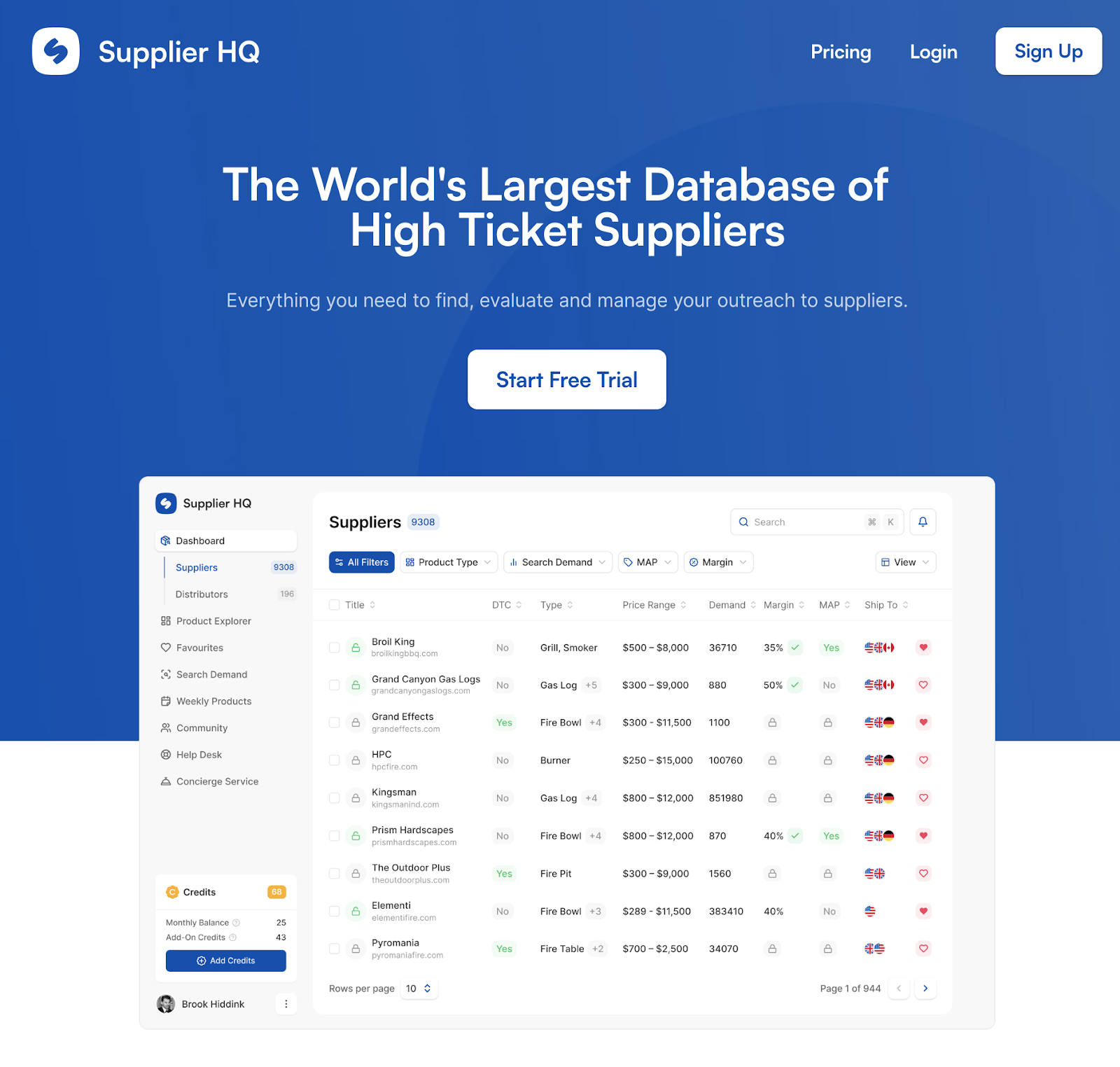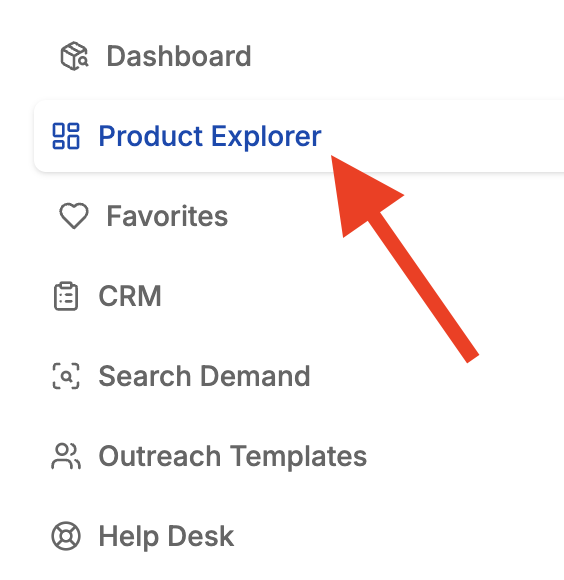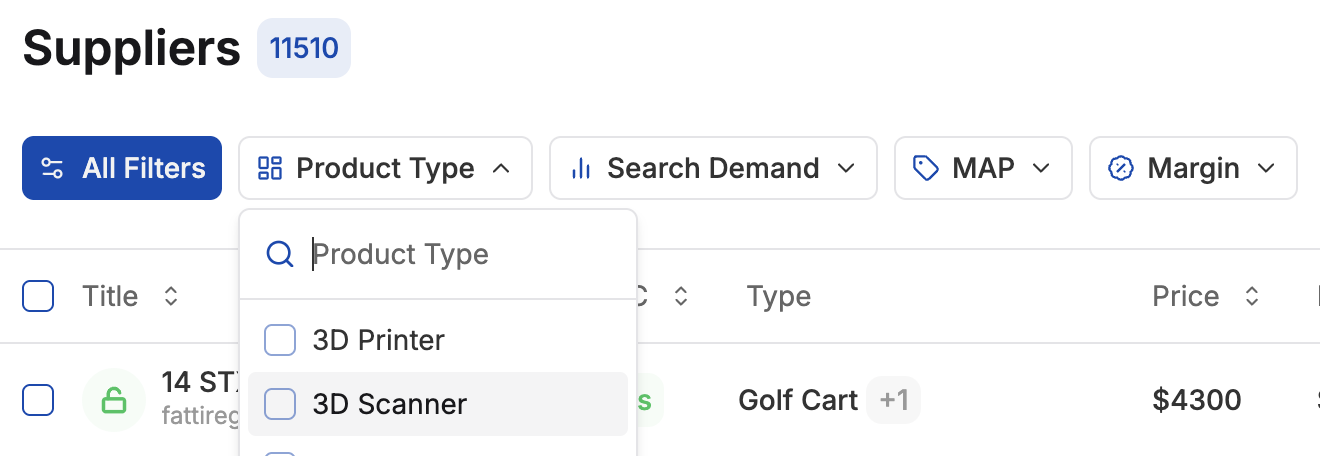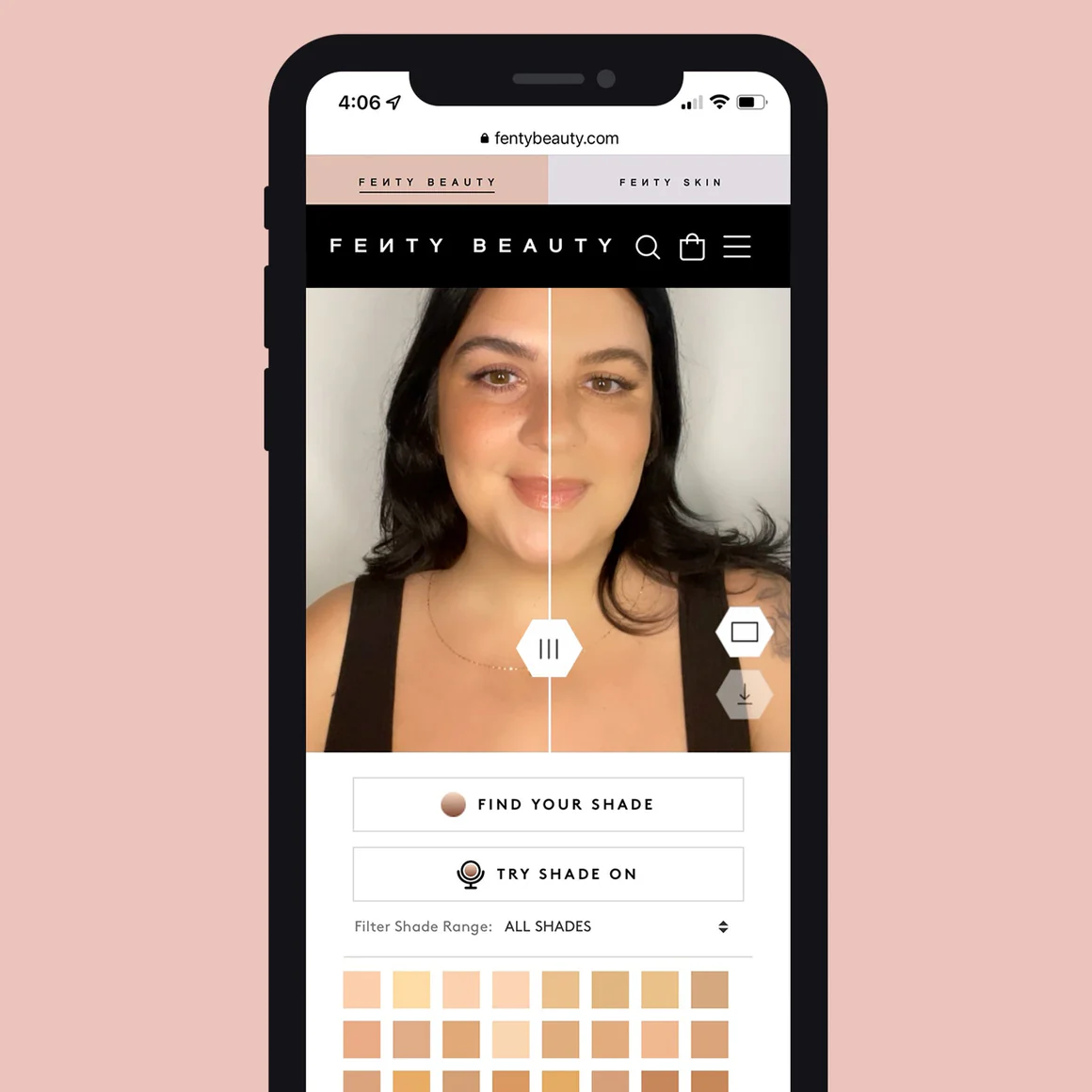Let me be honest with you: 2025 isn't just another year on the calendar. It's the year businesses either evolve or become irrelevant. And I'm not trying to scare you, but the data doesn't lie.
According to a recent McKinsey study, AI adoption among companies increased from 50% in 2020–2023 to 72% in 2024. Another report from PWC shows that AI could contribute $15.7 trillion to the global economy by 2030. Ignoring AI in your business means leaving a whopping amount of money on the table—for your competitors to grab.
Here’s why:
With AI revolutionizing every industry, there is a massive opportunity to sell high-ticket products that cost over $1,000. In the past, online shopping mostly revolved around impulse purchases: You saw an ad and bought the product.
But now, if I’m shopping for, let’s say, a fireplace, I can scan a QR code using an AI app, and I can see precisely how the fireplace will look in my living room. There are even full AI-powered virtual showrooms where I can walk around a showroom on my laptop and look at all the different products.
Over the next 3 to 5 years, AI will only continue to improve, and it will make it easier for people to make buying decisions on these high-ticket products from the comfort of their own home.
I've spent the last decade helping entrepreneurs build scalable systems and marketing funnels, and I've watched countless businesses thrive while others... Well, let's just say they’re no longer around to tell the story. The difference? The winners didn't just survive change. They anticipated it, embraced it, and used it as competitive fuel.
If you're reading this, you're already ahead of 80% of business owners who are still hoping things will "go back to normal." (Spoiler alert: they won't.) Instead, you're here because you want actionable strategies, not just to survive 2025, but to dominate it.
Ready to future-proof your business? Let's dive in.
Understanding the Modern Business Landscape
AI isn't coming for your business; it's already here. But here's what most entrepreneurs get wrong: they think AI is about replacing humans. Wrong. It's about amplifying human capability and freeing up your time to focus on what truly drives growth.
Meanwhile, voice commerce, AR/VR experiences, and blockchain applications are moving from "interesting concepts" to "competitive necessities." The businesses winning right now are experimenting with these technologies, failing fast, and iterating.
Other things to look out for are:
1. Disruptive competitors
Your biggest competition might not even be in your industry yet. Netflix didn't kill Blockbuster because they were better at renting DVDs. They reimagined how people consume entertainment entirely.
The lesson? Your competitive moat can't be based on what you do. It has to be based on how uniquely you solve your customer's deeper problem.
2. Shorter product life cycles
Remember when you could launch a product and ride that wave for years? Those days are gone. Product life cycles have compressed from years to months, sometimes weeks.
But here's the opportunity: shorter cycles mean faster feedback, quicker iteration, and more chances to get it right. The businesses thriving in this environment treat every launch as a learning experiment, not a final destination.
What "Staying Relevant" Really Means Today
I used to think staying relevant meant keeping up with trends. I was wrong. Staying relevant means staying valuable to your customers as their needs evolve.
Your customers aren't comparing you to your direct competitors anymore. They're comparing you to their best experience with any company. When they get instant support from Amazon, they expect the same responsiveness from their consultant. When Netflix recommends content perfectly aligned with their preferences, they expect the same personalization from every service provider.
This shift has raised the bar permanently. The question is no longer “Are we the best in our industry?” but “Are we delivering the best experience, period?”
Staying relevant means building a business that listens more than it talks. It means anticipating problems before they arise, communicating before you're asked, and evolving before you're forced to.
Top 10 Strategies to Stay Relevant and Thrive as a Business
1. Audit Your Relevance in Today's Business Landscape
Most e-commerce entrepreneurs are building businesses based on outdated assumptions about what customers want. Here's how to audit your current position against 2025 market realities:
- List the top 3 problems your ideal customer faces in 2025.
Customer pain points and buying patterns are constantly evolving. Today's consumers are dealing with decision fatigue from too many options, skepticism from being burned by low-quality products, and a desire for authentic brand experiences.
For high-ticket e-commerce, customers are primarily concerned with:
- Product authenticity and quality verification.
- Personalized shopping experiences that save time.
- Transparent business practices and ethical sourcing.
If you’re not directly addressing these concerns in your product pages, email flows, and customer service, you’re leaving revenue on the table.
Start your audit by answering these:
- Does your website clearly communicate product quality and authenticity? Add real customer reviews, behind-the-scenes production videos, and comparison charts to differentiate from low-quality competitors.
- Is your customer journey personalized? Use behavioral triggers in your email marketing (e.g., browse and cart abandonment flows) and recommend relevant products based on past purchases.
- Do you highlight your ethical practices? If your products are sustainably sourced, locally made, or support a cause, say it plainly; don’t bury it in your About page. Make it a core part of your brand storytelling.
You can also run simple polls or post-purchase surveys asking:
- “What made you choose us over others?”
- “What almost made you not buy?”
- “How could we serve you better next time?”
These insights are gold for spotting misalignment between what you think your value proposition is and what customers actually care about.
i. Compare your current offer to market leaders — where do you lag?
Don't just look at direct competitors. Study companies like Shopify Plus merchants who are capturing market share in your category. Analyze their:
- Average order values (high-ticket brands average $300+ AOV vs. $50-80 for traditional dropshipping)
- Customer lifetime value metrics
- Repeat purchase rates
- Review quality and volume
I use tools like SimilarWeb and SEMrush to analyze competitor traffic patterns and customer acquisition strategies. Most entrepreneurs are shocked to discover their "successful" competitors are often losing money on first purchases and profiting on retention, something impossible with low-margin products.
ii. Use Google Trends or Exploding Topics to check if your niche is growing or dying.
Data doesn't lie, but most people misinterpret it. Look beyond search volume to search intent quality. "Cheap iPhone cases" might have high volume, but "premium iPhone cases protection" shows higher commercial intent.
You can also use SupplierHQ to evaluate supplier reliability, product margins, and fulfillment speed across competitors.

Here’s how to dig deeper:
1. Product Explorer + Search Demand
Use Product Explorer to uncover high-performing products your competitors are already selling. Paired with Search Demand insights, you can see monthly buyer volume, trend direction, seasonality, and average retail prices.

This helps you avoid low-margin products and pivot toward SKUs that support sustainable growth, just like top Shopify Plus brands do.
2. Supplier Database & Advanced Filtering
Access a database of over 9,000 verified suppliers and 400+ distributors. You can filter suppliers based on criteria that matter for scaling, like price point, domestic dropship location, MAP (Minimum Advertised Price) enforcement, and verified profit margins.

This allows you to identify whether the most successful brands in your category are sourcing from premium, MAP-protected suppliers.
3. Verified Margins & MAP Enforcement Visibility
With SupplierHQ’s Margin and MAP fields, you can quickly compare supplier cost vs. recommended retail pricing to estimate your actual profit potential. If your current margins can’t support paid acquisition or retention-focused models — while competitors thrive because theirs can — this feature shows you exactly where you're falling behind and where to shift.

Finally, remember this: market leaders are building systems for customer retention, bundling, upselling, and community. Analyze the full stack, not just the product listing.
2. Identify What's Changing in Your Industry
Information asymmetry creates a competitive advantage. While your competitors are reacting to changes, you should be anticipating them. Here’s what to do:
i. Set up Google Alerts for industry keywords. But don't just monitor your product category. Track upstream indicators:
- Regulatory changes affecting manufacturing
- Raw material price fluctuations
- Shipping and logistics disruptions
- Technology adoption in your target demographic
For example, I monitor "sustainable packaging regulations" because they affect product costs 6-12 months before most suppliers adjust pricing. This warning allows strategic inventory decisions and price positioning.
ii. Join 2–3 industry-specific LinkedIn groups or subreddits.
The key is quality over quantity. I focus on:
- Private supplier communities where real costs and challenges are discussed
- Customer communities where pain points are expressed authentically
- Industry insider groups where regulatory and technology changes are previewed
The insight from these communities is worth thousands in market research.
iii. Schedule a 30-minute weekly scan of competitor and industry news.
This is strategic intelligence gathering, and I use a structured approach:
- 10 minutes on direct competitor analysis (new products, pricing changes, marketing angles)
- 10 minutes on adjacent industry developments (technology, regulations, consumer trends)
- 10 minutes on supplier and logistics intelligence (cost changes, capacity issues, new opportunities)
This weekly habit has helped me avoid costly mistakes and identified profitable opportunities before they became obvious to the market.
3. Revise Your Value Proposition
Most e-commerce businesses have weak value propositions because they're built around product features instead of customer outcomes. In 2025, customers don't buy products, they buy better versions of themselves.
Here are some tips that help:
i. Use the Value Proposition Canvas to map customer pain points to your solution.
Here's how I apply this specifically to e-commerce:
For high-ticket customers, the job-to-be-done isn't "buy a product"—it's "solve a problem with confidence." They're hiring your product to:
- Eliminate research time and decision anxiety
- Ensure they're making a smart investment
- Access expertise they don't have
- Achieve a specific lifestyle or professional outcome
I map every product in our catalog against these deeper customer jobs. Products that only solve surface-level problems get discontinued or repositioned.
ii. Replace vague slogans with benefit-focused messaging.
Generic claims like "premium quality" mean nothing. Customers need specific, measurable benefits:
Instead of: "High-quality office furniture" Use: "Ergonomic office chairs that eliminate back pain for 8+ hour workdays, backed by our 30-day comfort guarantee"
Instead of: "Fast shipping," say: "Order by 2 PM and get it delivered tomorrow—or it’s free."
4. Pivot or Refine Your Offer
Market demand shifts constantly, especially in e-commerce. The businesses that survive are the ones that can adapt their offers without losing their core identity.
i. Use customer surveys to spot demand shifts.
Send quarterly surveys to your customer base with specific questions:
- What problem were you trying to solve when you found us?
- What other solutions did you consider?
- What would make you order again immediately?
- What's the biggest challenge you're facing in [your business/life] right now?
The last question often reveals emerging needs before they show up in search data or competitor offerings.
ii. Introduce a small beta version of a new service or product — gather feedback before scaling.
Test every new product with a small group of existing customers before committing to inventory or major marketing spend.
For physical products, this means ordering 50-100 units for beta testing rather than the 500-1000 minimum that most suppliers require. Yes, the per-unit cost is higher, but the risk mitigation is worth it.
5. Validate New Business Ideas Rapidly
Speed of validation often determines market opportunity. In e-commerce, first-mover advantage can mean the difference between 40% margins and 15% margins.
i. Launch a no-code MVP using Carrd or Webflow in 24 hours.
I use this approach to test new product categories without building full inventory systems. Create a landing page, drive targeted traffic, and measure conversion intent before investing in suppliers or inventory.
The key metrics I track:
- Email signup rate (should be 15%+ for viable products)
- "Notify me when available" conversions (should be 3%+ of traffic)
- Engagement time on product descriptions (2+ minutes indicates real interest)
ii. Pre-sell before building
Before ordering inventory or committing to production, set up a simple checkout flow using Stripe Checkout or Gumroad to collect real pre-orders. If people are willing to put money down — even with a future ship date — that’s the clearest signal of product-market fit. This approach helps you avoid the sunk cost of launching products no one wants and gives you upfront capital to fund production.
You can also frame the offer as a limited beta or early access drop to create urgency and gather feedback from your most invested buyers. If pre-orders hit your validation targets (e.g., 50+ units sold in 72 hours), proceed. If not, pivot or scrap.
iii. Run micro-ad tests with Meta or TikTok Ads.
Spend as little as $50–$100 on a small ad set targeting your ideal audience with product mockups or concept visuals. Measure click-through rates, landing page conversion, and early comments or reactions. A high CTR (1%+) combined with interest-driven comments (e.g., “Where can I buy this?” or “I need this now”) is a strong signal of product demand.
6. Implement AI Tools to Stay Competitive
AI isn't replacing good business strategy, but it's amplifying the advantage of entrepreneurs who use it strategically. In e-commerce, AI creates competitive moats through operational efficiency and better decision-making.
i. Use ChatGPT for customer support scripts and content ideas.
I've developed specific prompts that generate customer service responses matching our brand voice while addressing 80% of common inquiries. This reduces response time from hours to minutes while maintaining consistency.
For content, I use AI to generate product descriptions, email sequences, and social media content based on customer review analysis. The key is using AI as an amplifier, not a replacement for strategy and brand voice.
ii. Use Zapier to automate lead responses or onboarding sequences.
Speed is a competitive advantage. With Zapier, you can automatically trigger onboarding emails, SMS follow-ups, or Slack alerts the moment a new lead comes in or a purchase is made.
For example, when someone fills out a contact form or abandons checkout, Zapier can instantly push that info to your CRM, send a personalized email via Klaviyo, and tag them for retargeting — all without manual input. This not only reduces response lag but ensures every lead gets timely, personalized engagement.
Key automations every e-commerce business should implement:
- Abandoned cart recovery sequences (3-5 emails over 14 days)
- Post-purchase onboarding and upsell sequences
- Customer review collection and response workflows
- Inventory alerts and reorder triggers
iii. Use Grammarly + Jasper AI for faster blog or email copy creation.
Creating high-converting content consistently can drain time and creative energy. That’s where tools like Jasper AI (for generation) and Grammarly (for editing) become essential. Jasper helps you quickly draft product launch emails, blog posts, SEO content, and ad copy using tone-of-voice settings tailored to your brand. Grammarly ensures your content reads professionally, is grammatically sound, and maintains clarity across channels.
The real value? You can go from a rough idea to publish-ready content in a fraction of the time, without sacrificing quality. This lets your team produce more, test faster, and stay ahead of slower-moving competitors.
iv. Use AR and VR to elevate the shopping experience
Virtual and augmented reality are becoming powerful tools for high-conversion e-commerce. AR lets customers visualize products in real-world settings (like furniture in their home or makeup on their face), reducing hesitation and returns.
VR, on the other hand, can create immersive virtual showrooms or try-before-you-buy experiences, especially useful for fashion, home decor, or high-ticket items.
Brands like Fenty Beauty use VR to create immersive experiences for buyers, allowing shoppers to virtually try on products, explore curated looks, and interact with the brand in ways that mimic an in-store experience — all from their device.

This not only builds trust in the product but also deepens emotional engagement with the brand.
7. Strengthen Customer Loyalty and Engagement
Customer retention drives profitability in e-commerce. Acquiring new customers costs 5-10x more than retaining existing ones, yet most entrepreneurs focus 90% of their effort on acquisition.
Here are some tips that’ll help you:
i. Map Your Customer Journey Today
Break it into 5 key stages: awareness → consideration → purchase → experience → repeat. Most e-commerce businesses lose customers in the experience and repeat stages because they stop focusing on customer success after the sale.
Here's how I optimize each stage:
- Awareness: Content that addresses real problems, not just product features
- Consideration: Social proof, detailed comparisons, risk reversal
- Purchase: Streamlined checkout, multiple payment options, clear expectations
- Experience: Onboarding sequences, usage guidance, proactive support
- Repeat: Exclusive offers, loyalty programs, community building
ii. Identify drop-off points and fix them with targeted content, emails, or better onboarding.
I use Google Analytics and Hotjar to identify where customers leave the funnel, then create specific interventions:
- Exit-intent popups for consideration stage visitors
- Email sequences for abandoned carts
- Post-purchase onboarding for first-time buyers
- Reactivation campaigns for dormant customers
iii. Use Klaviyo or Mailchimp to segment based on behavior or purchase history.
Personalization increases email revenue by 760% compared to batch-and-blast campaigns. My key segments:
- Purchase frequency (VIP, regular, one-time buyers)
- Product category preferences
- Engagement level (high, medium, low)
- Customer lifecycle stage
- Geographic location for shipping optimization
iv. Set up auto-DMs or chat flows that use names and preferences.
Automated personalization feels more human while scaling efficiently. I use customer data to create relevant, timely interactions that build stronger relationships without manual effort.
v. Build a Feedback Loop That Drives Growth
After every sale, send a 2-question survey: "Why did you buy?" and "What almost stopped you?" These simple questions reveal both your strengths and potential barriers. The insights directly inform:
- Product page optimization
- Marketing message refinement
- Objection handling in sales sequences
- Customer service improvement
vi. Use the answers to improve copy, offers, or onboarding.
Customer feedback should directly drive business improvements. If customers consistently mention specific benefits, use them in marketing. If they identify common concerns, address them proactively in the sales process.
8. Reinvent Your Marketing to Match 2025 Consumer Behavior
Marketing strategies that worked even 18 months ago may no longer be effective with today's consumers and algorithm changes.
To stay relevant:
i. Focus on bite-sized, visual storytelling.
Short-form content is the default language of the internet in 2025. Platforms like TikTok, Reels, and Shorts are prioritizing fast, visual stories over long-form static content. Your marketing should adapt accordingly.
Create snackable content that quickly communicates:
- A transformation (before vs. after)
- A unique product feature or use case
- The “why” behind your brand in under 10 seconds
Keep in mind that this is all about meeting attention-starved consumers where they are, with content that educates, entertains, or earns trust in less time than it takes to skip an ad.
ii. Turn customers into creators.
Your most powerful marketing asset is your customers. Equip them with easy ways to share their experience:
- Unboxing moments
- Try-on videos
- Before-and-after results
- Reviews or testimonials in Story format
Incentivize UGC with referral rewards, loyalty points, or simply by featuring them in your brand’s content. When real people show how they use your product, it builds social proof faster than polished ads ever could.
iii. Build campaigns around community and culture.
Culturally aware brands win attention. Whether it’s seasonal relevance, trending audio, or partnering with niche creators who understand their audience deeply, your marketing should reflect what’s happening now in your world.
Think less like a billboard, more like a participant in their feed. Your brand should add to the conversation, not interrupt it.
iv. Track platform-specific performance, not just global ROAS.
Looking at your total return on ad spend (ROAS) across all channels is helpful, but it's not enough. In 2025, every platform plays a distinct role in the buyer journey, and treating them the same leads to wasted spend and misinformed strategy.
For example:
- TikTok is typically top-of-funnel. It’s great for reaching new audiences and sparking interest, but not always for immediate conversions.
- Instagram works as a middle-of-funnel retargeting tool, reinforcing trust through visuals and user-generated content.
- Email and SMS excel at closing the sale and driving repeat purchases.
- Pinterest is more intent-driven. Customers browse to plan and save for future buys, making it ideal for evergreen, high-AOV products.
To stay competitive, you need to analyze each channel based on its primary function and optimize your content, messaging, and expectations accordingly. That means:
- Using platform-specific KPIs (e.g., view-through rate on TikTok, save rate on Pinterest, open/click rates on email).
- Creating native content tailored to each platform's user behavior.
- Avoiding the trap of comparing performance across channels without context.
Winning brands in 2025 are channel-intelligent. They understand what each platform is best at, and they play to those strengths.
Final Thoughts: Stay Ahead or Fall Behind
The businesses that will thrive in 2025 and beyond aren't necessarily the ones with the best products. They're the ones that adapt fastest to changing market conditions. They use AI smartly, serve customers deeply, and stay relentlessly proactive about market evolution.
These strategies aren't theoretical. They're the exact frameworks my students and I use to maintain competitive advantage in increasingly crowded markets. Whether you're scaling dropshipping operations with tools like SupplierHQ or building high-ticket e-commerce brands, these principles determine whether you grow or get left behind.
If you’d rather shorten the learning curve to find out how successful entrepreneurs like Brook Hiddink (yup, that’s me), Kabrin J, Tryggvi S., and many others at our academy make six figures via eCommerce, sign up for my HighTicket Accelerator Course.
In this self-paced course, you’ll learn how to create a sustainable online business under the guidance of people who have walked this path and have access to the premium tools we use. You can also apply for my free training or watch my free courses on my YouTube channel to get started.

